
What to do and see in Menaggio
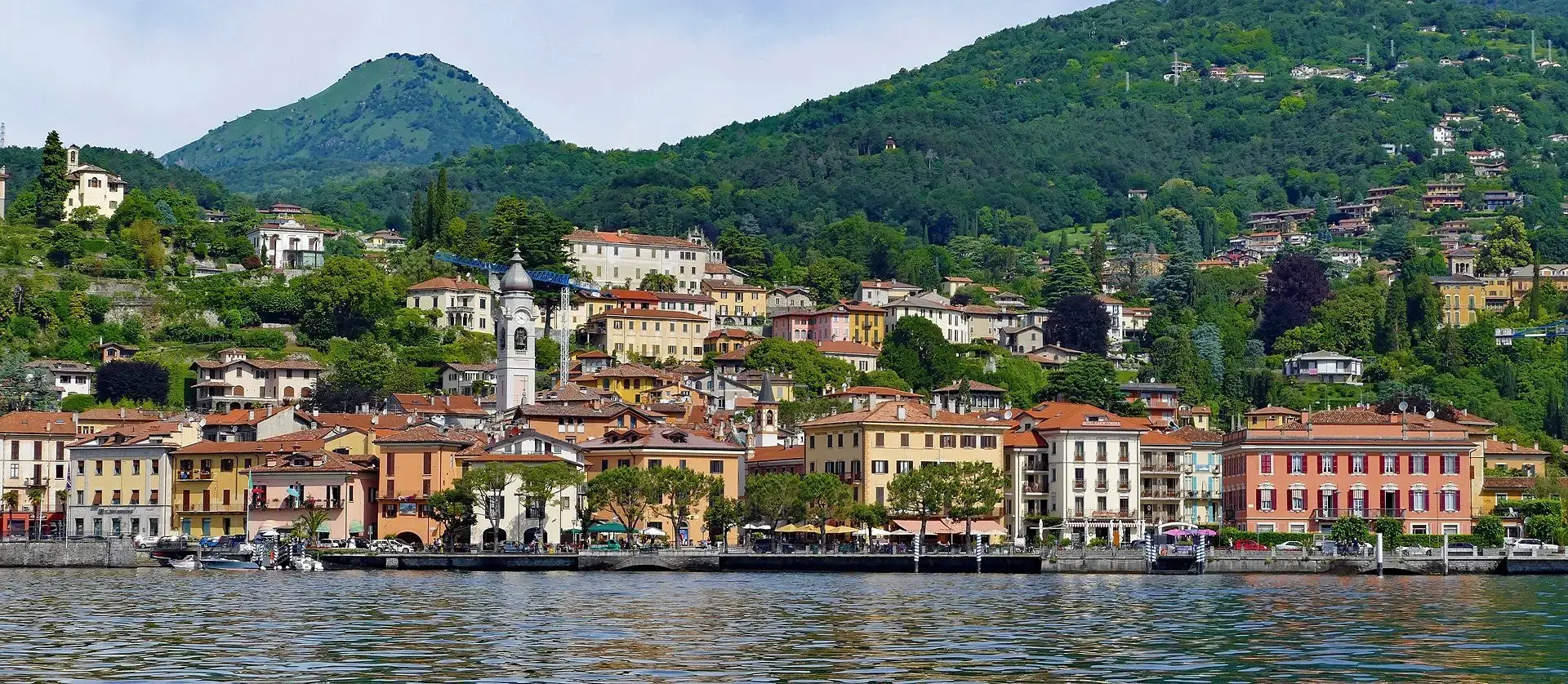
Menaggio is a lively village situated on the west coast of Lake Como, at the beginning of a wide valley, on the promontory formed over the millennia by the alluvial deposits of the Sanagra river.
Together with its three hamlets, Croce, Loveno and Nobiallo, it represents an excellent base point to discover Lake Como and reach quickly Lake Lugano.
It is also the ideal place for lovers of sport and physical activity who can enjoy a variety of disciplines here, from golf in the exclusive 18-hole course of the Menaggio – Cadenabbia Golf Club, founded in 1907, to swimming in the Lido di Menaggio, with its beautiful swimming pool and beach and spectacular views of the lake, or climbing in the rock climbing gym in Nobiallo. There are also many mountain bike and trekking routes in the area and there is no lack of boat or kayak hire. Children (and not only) can have fun on the minigolf course located along the lake and in the playground located in the heart of the village.
Menaggio is a town with very ancient origins and in its historical centre, characterized by a beautiful central square and a splendid lakeside promenade, there is no lack of important artistic heritage, all to be discovered.
Here are our advice and suggestions on what to do and visit in this beautiful village on Lake Como.
___
1.The village of Menaggio
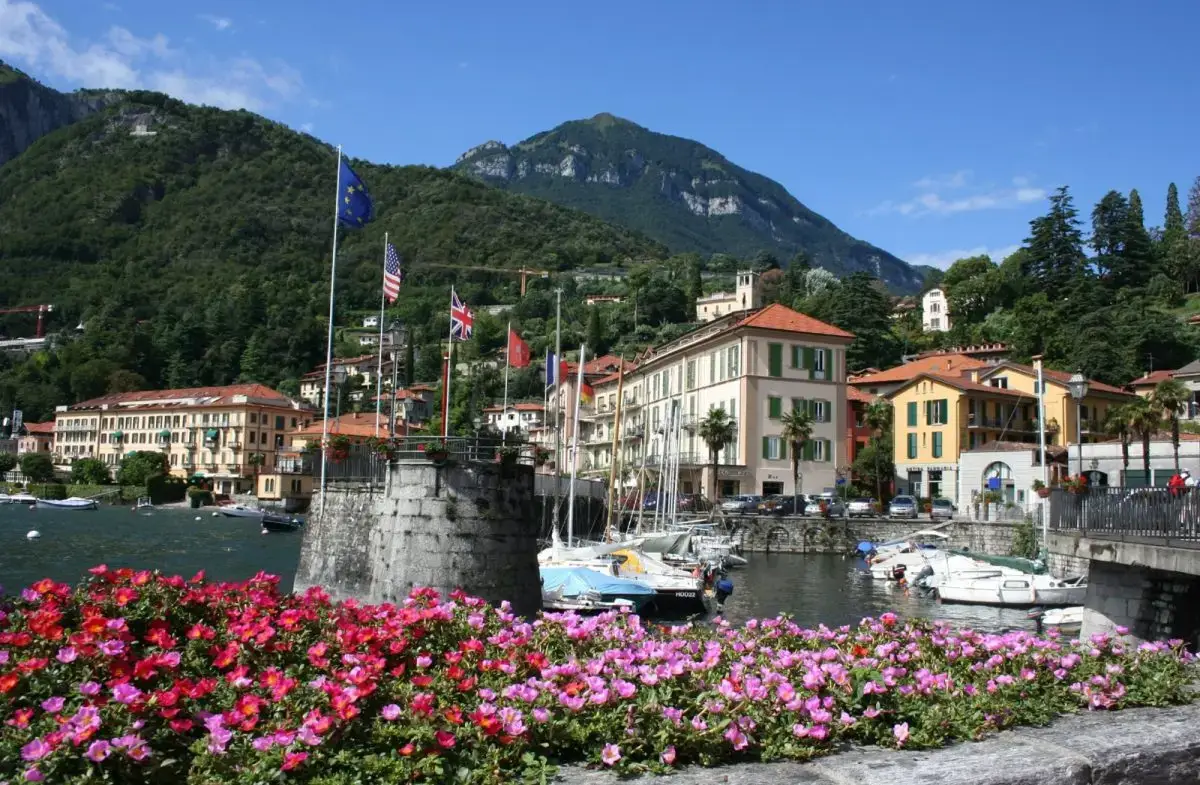
The beating heart of the village is Piazza Garibaldi, a beautiful square, directly on the lake, surrounded by small restaurants, where you can taste traditional dishes, cosy cafés and the refined shops of Via Calvi, the most populated and renowned street of the village, with the parish church of Santo Stefano in the background.
Often enlivened by musical events, handicraft markets or events, the square of Menaggio is also the perfect place to relax and breathe the beautiful atmosphere of this village.
But it is also the right place from which to start your visit to the village and discover its wonders.
Not to be missed, for sure, is the lakeside promenade, Menaggio’s pride and joy, where it is a pleasure to walk at the foot of elegant and renowned hotels, enjoying the lake panorama in the shade of plane trees and suggestive wrought iron pergola.
2. Attractions
Villa Mylius Vigoni
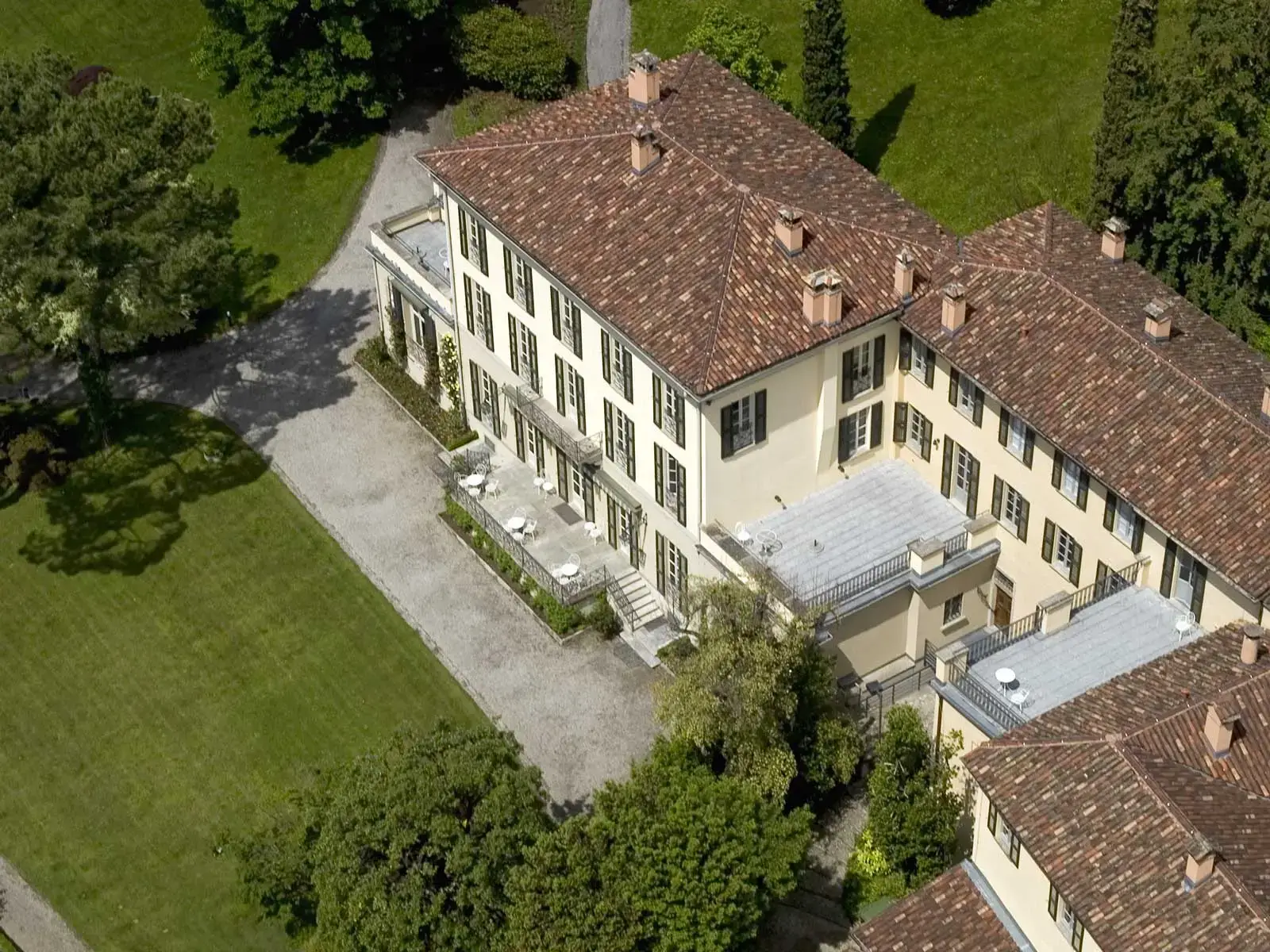
Villa Mylius Vigoni, Menaggio’s only historical residence open to the public, is located in Loveno, a hamlet particularly loved over the centuries by artists and personalities.
This splendid nineteenth-century villa, together with the nearby Villa Garovaglio Ricci, is currently the Italian-German Centre for European Excellence, a laboratory of ideas, a meeting place and a place for comparison between Italy and Germany, where projects are promoted and knowledge in the scientific, political, economic and artistic fields is deepened.
But Villa Mylius Vigoni also fulfils its museum activities and enhances the rich historical and artistic heritage it prides itself on. The owner Mylius had bought this residence in 1829 and over the years has expanded and embellished it to house his rich collections of paintings, statues and precious furnishings, thus transforming it into a museum house which, thanks to the care of his descendants, the Vigoni, has been preserved intact to this day.
Passing through its rooms, one is immersed in an environment full of works signed by some of the most important artists of the early nineteenth century, including Massimo d’Azeglio, Francesco Hayez and Alessandro Manzoni. In addition to the large family portraits and the refined furniture, you can also admire a whole series of everyday objects, from watches to cutlery, from linen to children’s games.
The villa is also surrounded by a large English-style park: a naturalistic and scenic environment of rare beauty, where age-old trees, panoramic viewpoints and exotic essences blend into a unique ensemble. The park was created by landscape architect Giuseppe Balzaretto around 1860 and extends, like an amphitheatre, over an area of about 8 hectares, representing one of the most intact examples of romantic gardens still preserved in Lombardy.
Opening Hours
The park of Villa Mylius-Vigoni can be visited from March to October on the following days:
- every Tuesday at 2.30 p.m. guided tour in German/English
- every Thursday at 2.30 p.m. guided tour in Italian
You must book by Friday of the previous week.
—
Medieval Castle
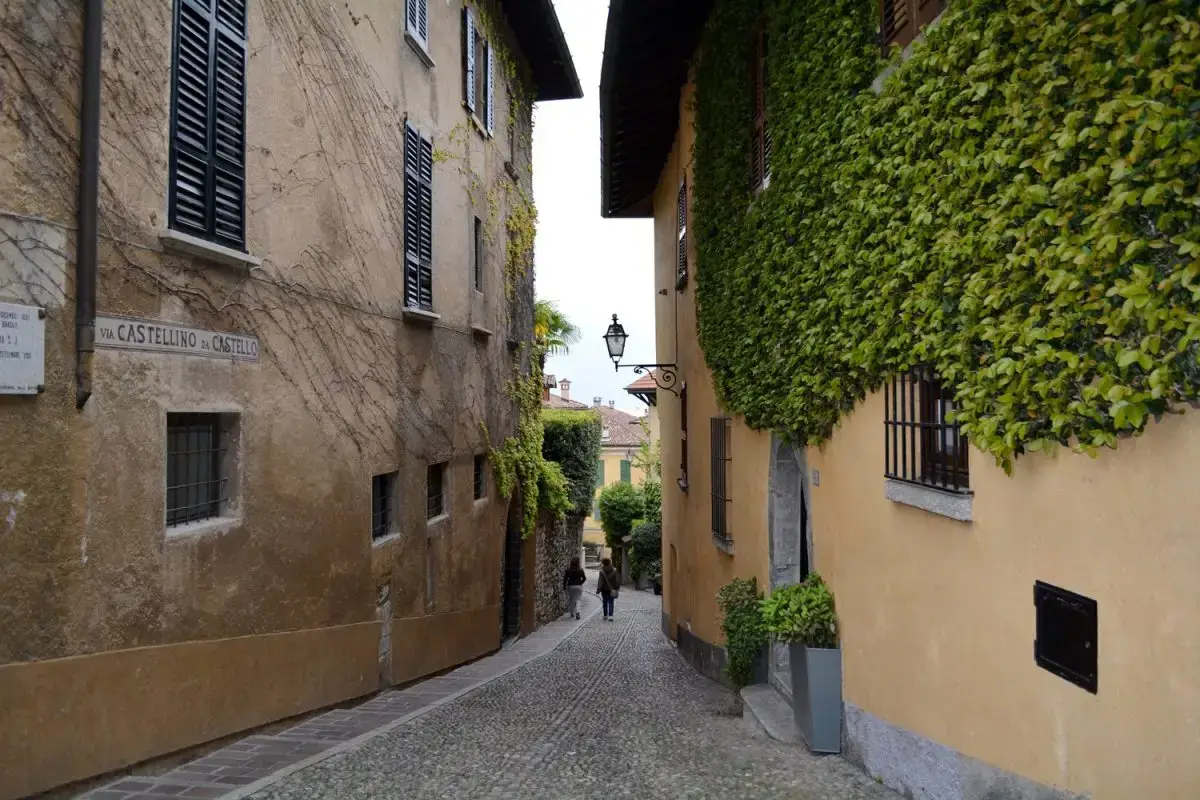
During the Middle Ages the town of Menaggio also boasted the presence of a castle for defensive purposes.
The castle, dating back to the X century, today offers a vague idea of what it was like in medieval times. Unfortunately, in fact, it was completely destroyed and dismantled by the Lords of the Grey Leagues in 1523.
Of its past, it preserves the imposing perimeter walls, which can be admired in several places, giving an idea of its original forms.
To reach the hill on which it stands, behind the village, you take the cobbled slope embellished with valuable portals, behind the Parish Church of Santo Stefano.
—
Monument to the silk weaver
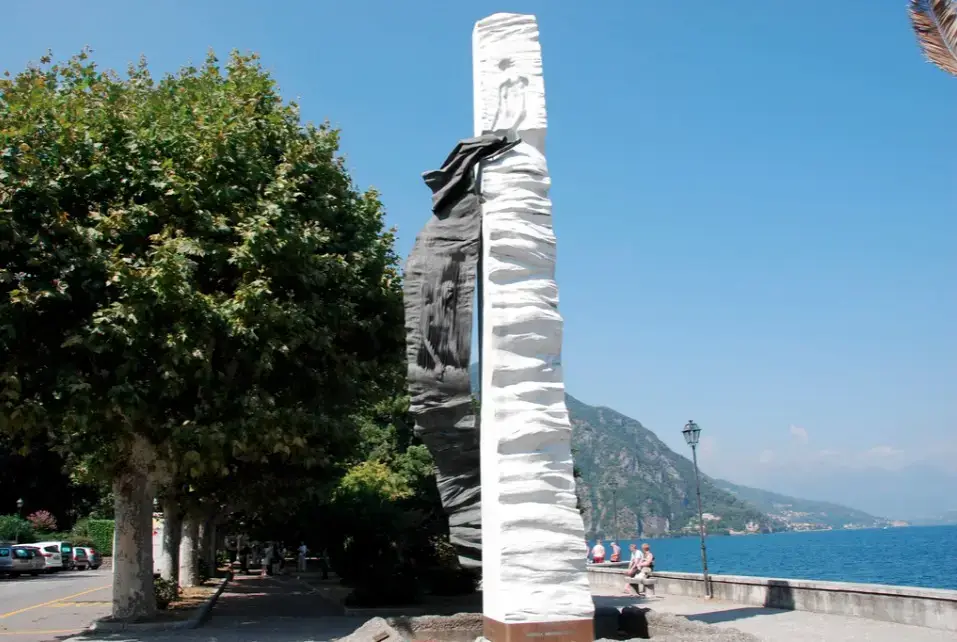
Walking along the suggestive lakeside promenade of Menaggio, we come across a curious stele in white Carrara marble, 10 metres high: it is the Monument to the silk weaver, created in 1990 by the sculptor Francesco Somaini, commissioned by the Mantero family, who had one of the oldest and most prestigious silk factories on the banks of the Sanagra river in Burgatto.
The monument celebrates and interprets the work and labours of the “Tessitrice” (silk weaver), of which one can see, in the stone, at the top, the outline in negative, a female figure at work on a vertical loom. The same motif is echoed, in positive, in the lateral bronze drapery that seems to “come out” of the marble weaver’s hands. Both bases of the two columns are a succession of drapes falling to the ground.
Note the lower band, also in bronze, with writing on the four sides: BEPPE MANTERO WANTED IT / MARIOLA MANTERO BUILT IT/ FRANCESCO SOMAINI SCULPTED IT / 1982 – 1990.
3. Churches
Church of St. Stephen
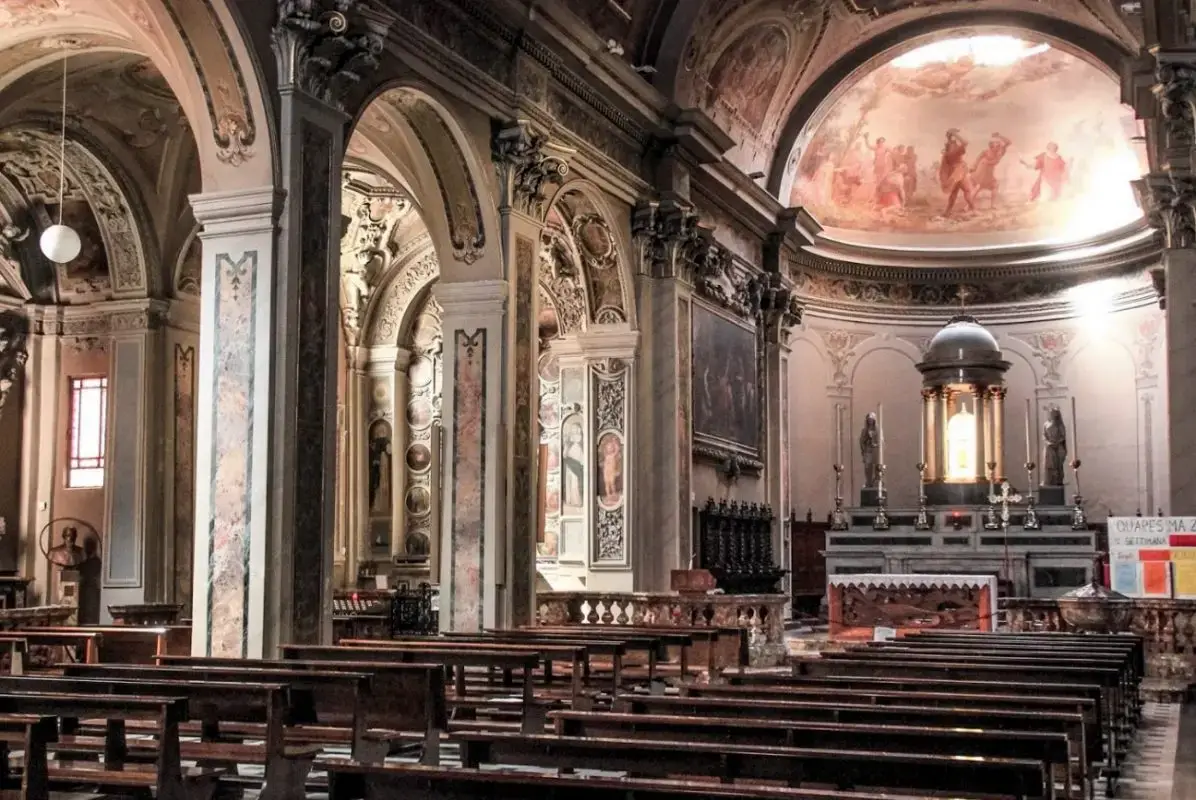
The parish church of Santo Stefano, with its beautiful façade, is the backdrop to the lively Via Calvi.
It is of very ancient origins and its original structures are today hidden by restoration and rebuilding; even its orientation is in the opposite direction to the primitive one.
Don’t miss a visit to its interiors, which have three naves and were frescoed in 1899 by Tagliaferri, an artist originally from Pagnona.
Remarkable, in the basin of the apse, the martyrdom of St. Stephen, while in the presbytery, note the two paintings by the painter Castelli da Menaggio, representing two Eucharistic miracles: the bleeding host under the dagger of the Protestants and a sacrilegious communicand that overflows in front of S. Carlo Borromeo.
Above the altar of the Madonna, in the head of the left aisle, you can admire a copy of the painting by Bernardino Luini, reproducing Mary with Jesus and an angel, whose original is in the Louvre.
The altar is surrounded by eighteenth-century copper oil medallions with scenes from the life of the Madonna. In the right aisle a canvas of considerable size, but by an unknown artist, depicts St. George, while the altar of the Sacred Heart is adorned with eighteenth-century stuccoes by intelvesi masters. Also in the minor aisles there are two large paintings of the Flemish School (on the left the birth of the Madonna and on the right the Pietà).
—
Church of St. Marta

Walking along the beautiful Via Calvi, from Piazza Garibaldi, in the direction of the Church of Santo Stefano, on the right side, you come across the interesting neo-Gothic façade (rebuilt in 1885) of the small church of Santa Marta, nestled between boutiques and colourful houses.
With a single nave, with a side chapel and a small bell tower, the church has ancient origins, but was remodelled a lot during the nineteenth century.
On the wall of the façade, some stone finds, very representative of the history of this village, catch the eye.
Among the various, to be noticed:
- a fragment of a Roman funerary tombstone of Lucio Minicio Exorato, an important imperial official of Vespasiano (1st century A.D.), found in the lake near Santa Maria Rezzonico, in the first half of the 16th century and transported here by the humanist Francesco Calvi, who believed that he had found in the name Minicio the origin of the place name of the village;
- a stone arch key with a bas-relief depiction of the castle of Menaggio, dating back to the 14th century, which has become the municipal coat of arms (below it the inscription “Menasy” has been added);
Not to be missed, inside, some splendid canvases, an 18th century Nativity and Flagellation and an original medieval stoup.
The church is always open and can be visited.
—
Church of St. Carlo
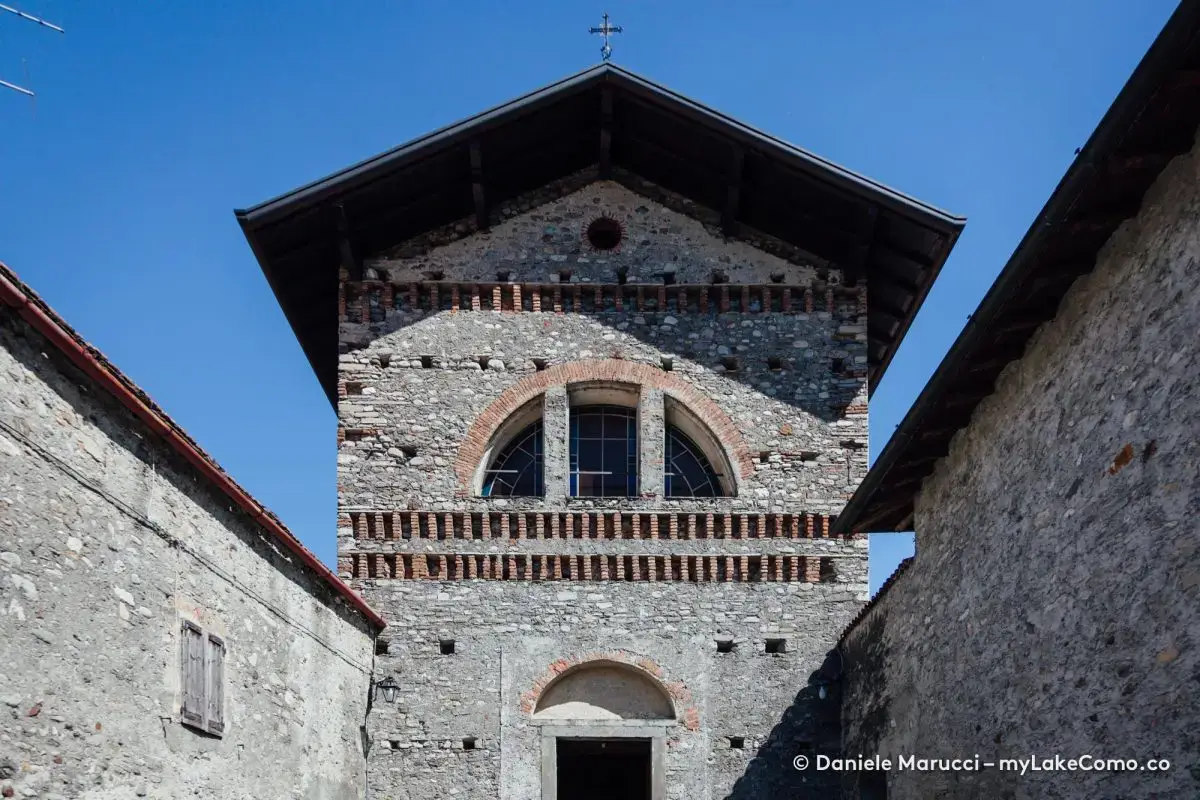
The Church of San Carlo, in the hamlet of Castello, was built by Cinzio Calvi between 1612 and 1614, on the ruins of the ancient castle, to serve as a tomb for him and his wife Caterina Camozzi. Their tombstone is located inside, on the floor in front of the altar in polychrome marble.
Beautiful is the simple facade in exposed stone, decorated with terracotta brick bands, set between the walls of ancient buildings including, the one on the left, the house of the Canons.
The church has a single nave and in the chapel on the left there is a painting of Saints Fermo, Apollonia and Agatha, by Giuseppe Vermiglio, a painter who worked for a long time for the canons of the monastery of S. Maria della Passione in Milan; on the side wall there is also a display case with the red skull that belonged to Cardinal Andrea Carlo Ferrari (another link with the Diocese of Milan). There are also interesting 17th century paintings on the walls.
Certainly characteristic is the elegant sail-shaped bell tower, in Spanish style, but visible only from the town centre.
—
Church of SS. Lorenzo and Agnese
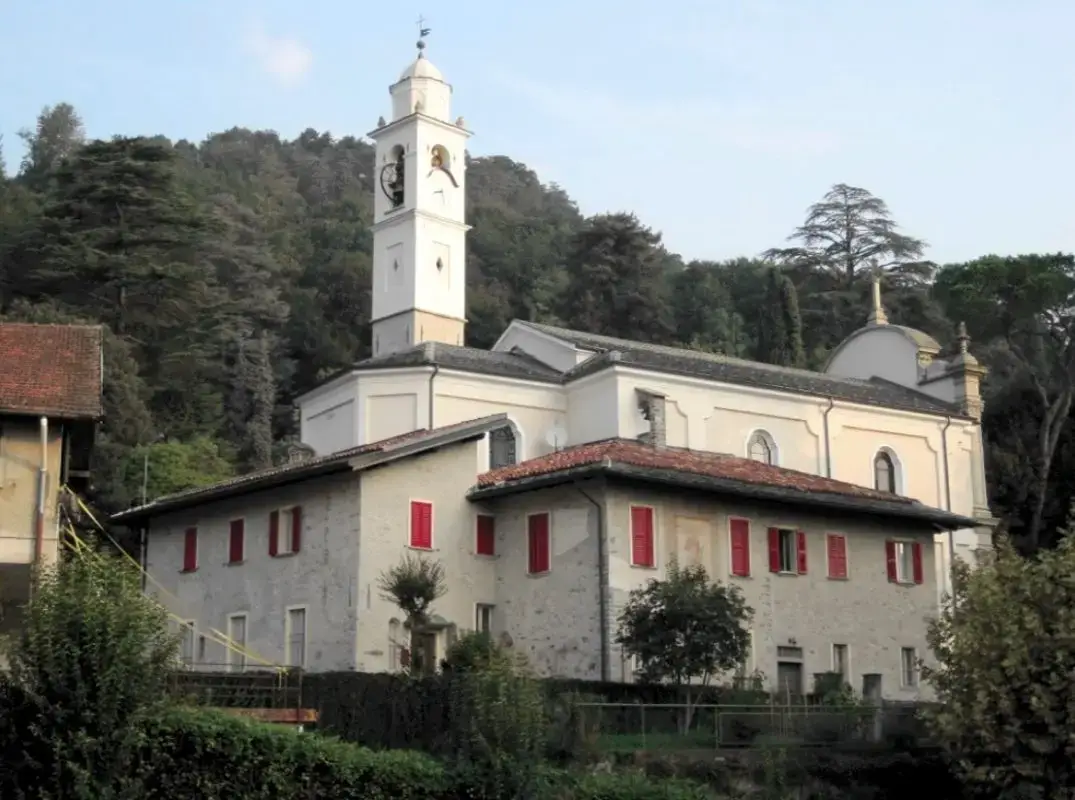
The parish Church of SS. Lorenzo and Agnese located in Loveno, immersed in the green parks that surround it, is certainly of ancient foundation and represents a remarkable example of Baroque art.
It was built between 1725 and 1738 and its interiors, of considerable value, bear witness to the wealth of the community that provided for its embellishment.
Not to be missed are the altars in precious marble, the frescoes by Luigi Tagliaferro, a precious canvas of the “Madonna dei Sette Dolori” and a wooden statue by Lorenzo Matieli dated 1737.
—
Church of Sts. Bartholomew and Nicholas
This small parish church is located in the hamlet of Nobiallo, a small fishing village just outside Menaggio, also crossed by the ancient Roman transit road Regina.
The detail that immediately catches the eye of this little church is its unusual 13th century Romanesque leaning bell tower.
4. Val Sanagra Park
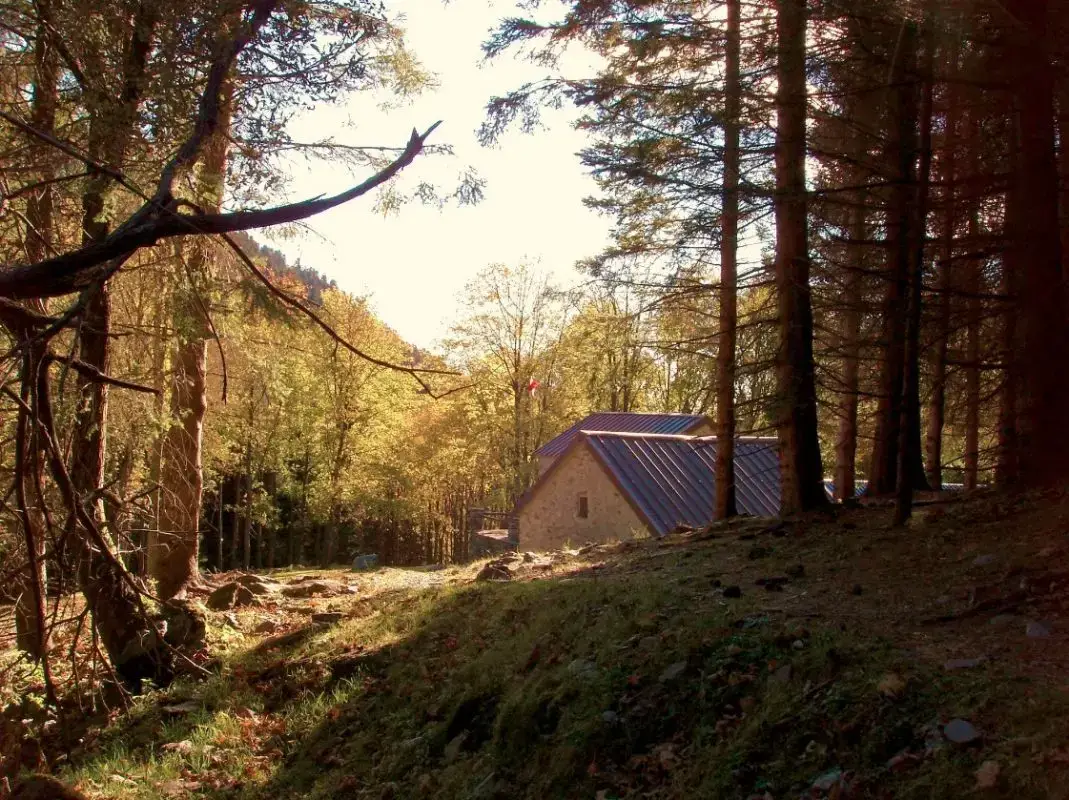
For nature lovers not to be missed is the Val Sanagra Park, a vast area rich in flora, fauna and ancient rural settlements, just above the village of Menaggio.
The Park is defined “a pearl of nature between Lario and Ceresio” and is located in the splendid valley that wedges into the heart of the Lepontine Prealps.
The really fascinating aspect of this place is its still wild environment, made of woods, prairies and mountain pastures. Very suggestive is the valuable fir wood of Abies alba that covers the basin of the torrent.
But also its faunal patrimony is of undoubted value: populated by more than a hundred animals, it has obtained the recognition of oasis, to safeguard and protect its fauna.
The best way to get to know and experience the park is to try your hand at one of the numerous and varied routes, more or less demanding, that develop inside it. Coming from Menaggio, the starting point for the various walks is the hamlet of Loveno, near its cemetery (Loc. Piamuro), where it is also possible to park.
In the Park there are several points of naturalistic interest and fascinating testimonies of the traditional activities that have characterized this territory over the centuries.
We point out the main ones:
- Val Sanagra Ethnographic and Naturalistic Museum: it has been housed since 1986 in the splendid setting of Villa Camozzi, seat of the municipality of Grandola and Uniti, and is certainly worth a visit. It is the perfect place where you can learn more about the culture and traditions of the territory and its naturalistic and landscape aspects. The museum is organized in thematic rooms that range from the study of trails to the exhibition of a vast collection of fossils and animals. It also boasts a sector dedicated to the illustration of Val Sanagra with in-depth studies of orography, ethnography and ecology.
- Artus Chapel: situated right on the border between Grandola and Uniti and Menaggio, it flanks the dirt road that from Piamuro leads to the mills of the Valley, the ancient Regina and the village of Codogna. The name “Artus” derives from Artusio, the historical name of the place where the Chapel was built. The building is one of the most significant testimonies of the ancient popular religiosity of the territory because of the legend that accompanies it.
- Fornace Galli: ancient brick factory, today it is an example of industrial archaeology. Inside there is a firing kiln and the necessary systems for working the clay through the motive power of water. The building, restored and put into operation, is the seat of the Park and can be visited during the summer.
- Vecchia Chioderia: until 1820 a mill and then, between 1943 and 1966, a nail factory, now a trout farm and an agritourism.
- Carliseppi Mill: near a suggestive stone bridge. Here, until not so long ago, wheat was ground.
- Sass Corbée: huge monolith situated in a place where the stream generates a suggestive waterfall.
- The Rogolone and the Rogolino: two monumental examples of oak trees are located in the municipality of Grandola and Uniti, at an altitude of 450 m, on a clearing belonging to the hamlet of Velzo, near the locality “Bosco Impero”. The Rogolone, in particular, is a centuries-old oak of exceptional dimensions: 8 m in circumference and 25 m in height, making it the largest oak in northern Italy and one of the most majestic in Europe. Declared a National Momument in 1928, it is also the symbol of the Val Sanagra Museum.
5. Walks
Thanks to its central position, between the lake and the mountains, Menaggio is the ideal starting point for any kind of excursion: in its surrounding area you can walk through the numerous valleys, with their rural settlements and ancient communication routes, you can discover the paths of the Val Sanagra Park, a large green lung at the gates of Menaggio or follow more demanding itineraries suitable for sportsmen.
The Crocetta and the Cadorna Line

The Crocetta (500 m) is a panoramic point above Menaggio, from where you can enjoy a breathtaking view of Lake Como, the coast of Bellagio and the small neighbouring villages, the Upper Lake and the Valtellina.
The particularity of this place is also due to its historical interest, as Monte Crocetta was part of the Cadorna Line, a line of defence, never armed and never used, of the First World War.
Near the panoramic point you can therefore observe both the trenches of the Great War and the chapel of S. Maurizio, built in 1975 by the Alpini Group of Menaggio, in memory of the fallen of all the wars, with inside two frescoes by Bruno Azimonti.
Below the church, in the bunker that is part of the fortifications of Mount Crocetta, there is the shrine where every fallen of Menaggio is remembered.
How to reach the panoramic point
The itinerary to reach La Crocetta and La Linea Cadorna starts from Croce.
From the bus stop, continue about ten metres along the carriageway. Cross the state road and take the road in the direction of Golf (Via Wyatt). Pass in front of a beautiful washhouse and after about 200 m turn left into Via Pigato. Continue on the asphalt road, which becomes a dirt road further on, until you reach the trenches first, then the little church and then the panoramic viewpoint La Crocetta.
—
The Rifugio Menaggio
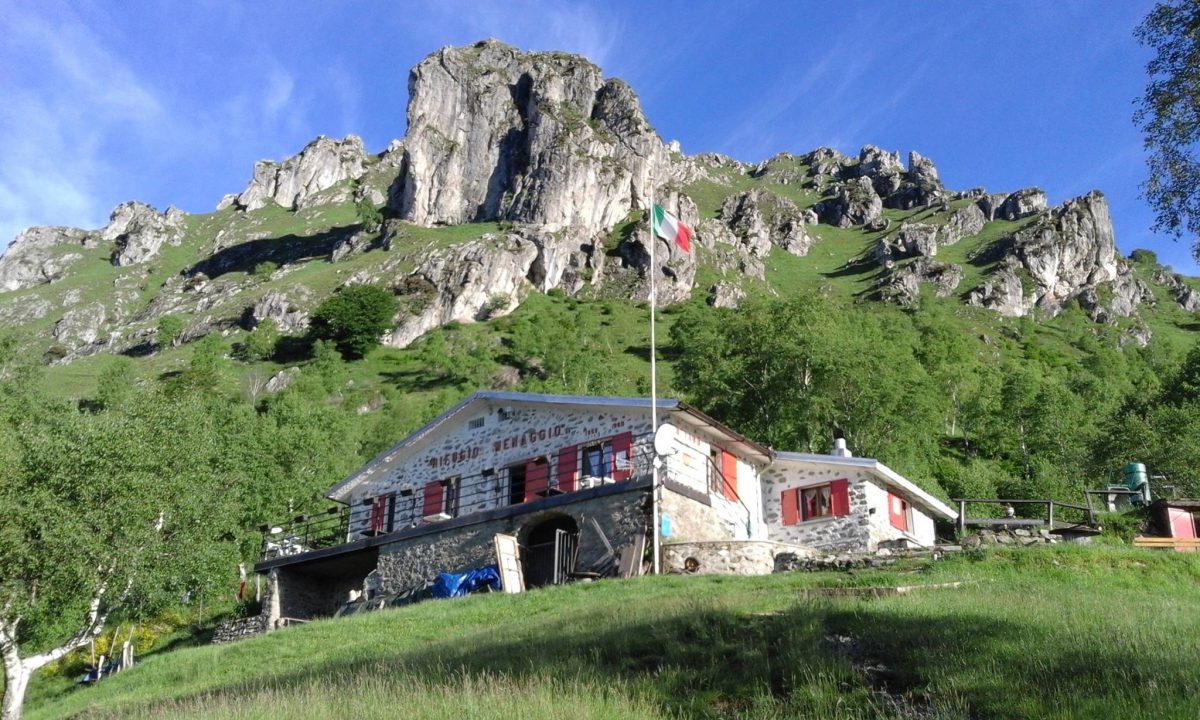
The Menaggio Refuge (1400 m) is located at the foot of the southern slope of Mount Grona and offers a spectacular view of Lake Como and the surrounding mountains.
It is a very popular destination, the arrival and departure point for various itineraries. From the refuge the next most popular stages for walkers are Monte Grona (1736 m) and Monte Bregagno (2107 m).
To reach the refuge, going up from Menaggio, the starting point is Breglia, in the municipality of Plesio. From there, along a path that winds through the woods, among birch trees and brooms, in some parts steeply uphill, in about 1 hour and 45 minutes you reach your destination. It is also possible to park in the Breglia Mountains, along the agro-sylvo-pastoral road for a fee (3 euro).
The refuge is open from mid-June to the end of September every day; during the rest of the year on Saturdays, Sundays and holidays.
—
Along the tracks of the former railway
This particular itinerary runs along the tracks of the former railway line that ran between Menaggio and Porlezza. The route can be covered on foot or by bicycle and connects Lake Como to Lake Lugano, crossing the Lago di Piano Nature Reserve.
The railway line between Menaggio and Porlezza, inaugurated in 1884, was created with the aim of increasing tourism in northern Europe to the lake region. Once arrived by train in Lugano, passengers continued by steamship to Porlezza and from there by train to Menaggio. Between the two World Wars, until 1939, the railway line was used as a local transport system and then fell into disuse at the end of the Second World War.
Today its route, which has been upgraded and made safe again, looks like a beautiful cycle/pedestrian path all to be experienced.
The beginning of the route, at the “Consorzio Agrario Migross Market”, coincides with the old railway station of Menaggio, once located near the landing stage.
—
The Antica Strada Regina
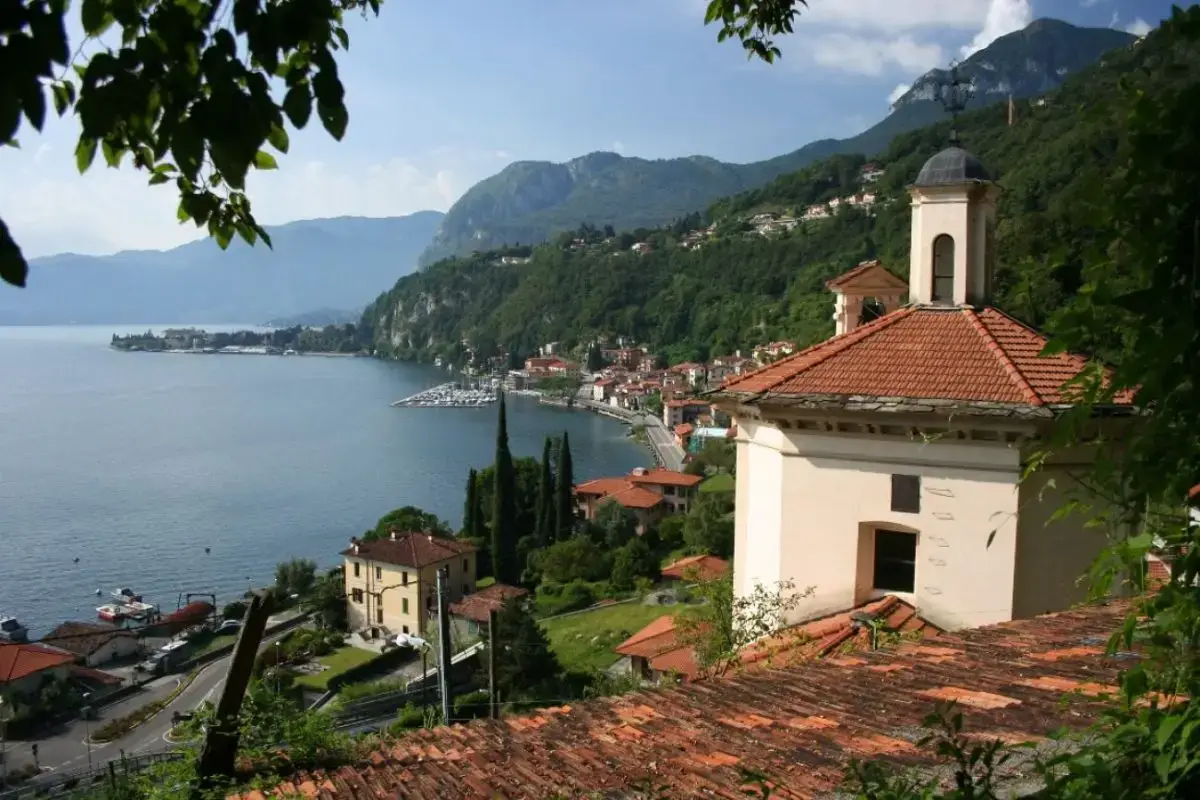
The Antica Strada Regina is a route dating back to Roman times, which ran along the western shore of the lake and for centuries represented the connection between the South and the North of the Alps, between the Como and Milan area and the transalpine regions.
The walk along this route follows a well-preserved stretch of the ancient road and leads from the hamlet of Nobiallo to the historic centre of Rezzonico, a very charming and picturesque village where you can admire one of the rare preserved fortifications of the lake, with a high battlements tower dating back to the 14th century.
The itinerary touches on very panoramic points, such as the Sanctuary of the Queen of Peace and the Sasso Rancio, a rugged and arid cliff overhanging the lake, suggestive historical hamlets and interesting artistic and architectural beauties.
Not to be missed is Villa La Gaeta (1921), with its medieval-renaissance castle shape, known for having served as a film set for some scenes from the 007 series “Casino Royale“.
—
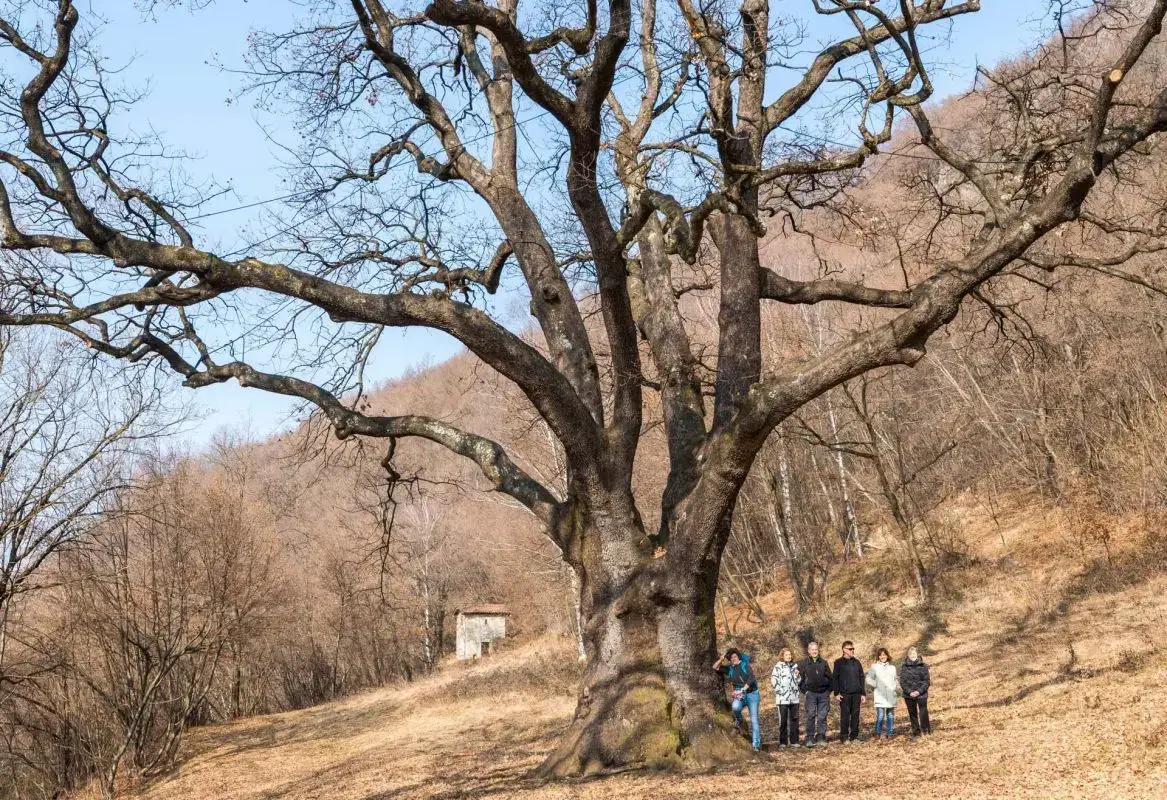
This beautiful walk, also suitable for families, leads to the discovery of the “Rogolone“, a large oak tree 25 metres high and 8 metres in circumference, declared a National Monument in 1928.
Starting from Menaggio and following a ring-route, the route of about 11, 5 km takes about 4 hours and 30 of walking, with a succession of fascinating landscapes, ancient villages, natural environments and points of considerable interest.